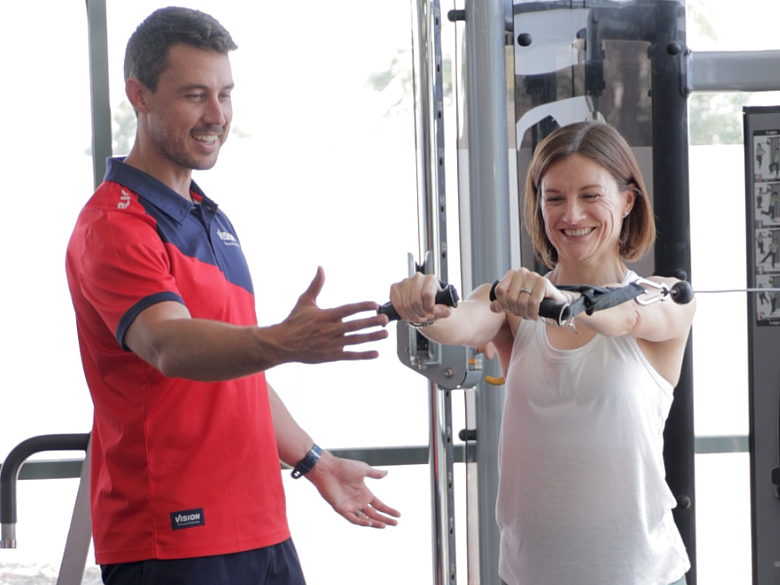1. Maintains Muscle Mass and Functional Strength
From our 30s onward, adults can lose up to 3–8% of muscle mass per decade, accelerating after age 60. This decline, known as sarcopenia, contributes to weakness, fatigue, and loss of mobility. Regular resistance training stimulates muscle protein synthesis, helping to maintain or rebuild muscle tissue. Stronger muscles make daily activities — such as standing from a chair, lifting groceries, or carrying grandchildren — easier and safer.
2. Promotes Bone Density and Joint Health
As we age, bones naturally lose density, increasing the risk of fractures and osteoporosis. Strength training applies controlled stress to bones, stimulating the cells that build bone tissue. This process improves bone density, joint stability, and posture. Additionally, resistance exercises strengthen the muscles and connective tissues around joints, reducing pain and stiffness commonly associated with arthritis.
3. Enhances Metabolic Health and Weight Management
Muscle tissue is metabolically active — meaning the more muscle you have, the more calories your body burns at rest. Resistance training helps prevent age-related slowing of metabolism and supports healthy blood sugar regulation, which reduces the risk of type 2 diabetes, obesity, and cardiovascular disease. It also improves insulin sensitivity, an important factor in managing energy and preventing metabolic decline.
4. Improves Balance, Coordination, and Reduces Falls
Falls are a leading cause of injury among older adults. Resistance training improves neuromuscular control — the communication between the brain and muscles — enhancing balance, reaction time, and coordination. Exercises that challenge both strength and stability, such as squats, step-ups, or resistance band movements, can significantly reduce fall risk.
5. Boosts Mental Health and Cognitive Function
Beyond physical benefits, resistance training supports brain health. Research shows it can enhance memory, focus, and overall cognitive performance by increasing blood flow to the brain and stimulating the release of growth factors. It also reduces symptoms of anxiety and depression, improves sleep quality, and enhances self-esteem through a sense of accomplishment and physical capability.
6. Supports Longevity and Quality of Life
Ultimately, the goal of resistance training isn’t just to live longer, but to live better. Maintaining strength and mobility allows older adults to remain active, independent, and engaged in daily life. Studies have shown that people who include regular resistance training in their routine experience lower mortality rates and a higher overall quality of life.
Getting Started Safely
For beginners or older adults, starting under the guidance of a qualified trainer or exercise physiologist is recommended. Begin with two sessions per week focusing on major muscle groups, using light resistance and controlled movements. Gradually increase frequency and intensity as strength improves.
Simple tools like resistance bands, light dumbbells, or even bodyweight exercises (such as wall push-ups or chair squats) are excellent starting points.
In summary
Resistance training is not just for athletes — it’s a cornerstone of healthy ageing. By preserving muscle and bone, improving balance and mood, and supporting metabolic and brain health, strength training empowers people to stay active, confident, and independent well into later life.

